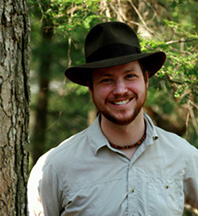Week of July 30, 2023 – August 5, 2023
by Tom Meier, Camp Director & Program Manager
Legend tells of a giant crayfish lurking in the waters of Baltimore Woods. Accounts differ on just how large this freshwater crustacean is, where it came from, and what species it might actually be. If you ask our 6-year-old campers this week, Crayzilla is at least 3 feet long; the 12-year-olds would tell you that it’s closer to 6 inches.
Campers search the calmer waters of Baltimore and Boulder Brooks, flipping rocks, waiting patiently for the silt to settle, and bravely reaching in to catch, hold, observe, and connect with any crayfish they find. Crayzilla is the ever-elusive goal.
Just this week a group found a large virile crayfish in Boulder Brook. This species is common in the northeast, in cold streams, and can be identified by the blue tint to its legs and pincers. They grow to a maximum carapace length of 55mm – that’s just the hard head/body length, not including the tail – about the length of an adult’s little finger.
A few years ago, one of our camp staff found a much larger specimen of what might have been the spinycheek crayfish, which has a carapace length of up to 59mm. Was that Crayzilla?
Crayfish are important links in the web of life in a healthy stream and forest. They are omnivorous, eating plant material, algae, snails, insects, small fish, tadpoles, worms, etc. In turn, they are a food source for larger fish, racoons, mink, otters, and great blue herons. Our shady streams are full of them, a testament to the health of our preserve and the importance of protecting streams.
Will our campers ever find Crayzilla? Who knows! The hunt has lasted generations and will last for generations to come. In the end, it’s not the prize that counts, it’s the search and the hands-on connections children make with nature here every day that truly matters the most.
Here’s a great quick crayfish ID guide: https://onnaturemagazine.com/crayfish-guide.html


